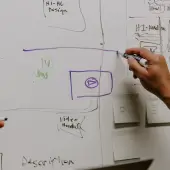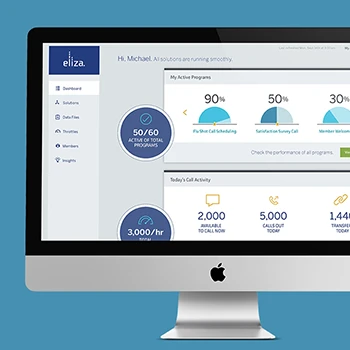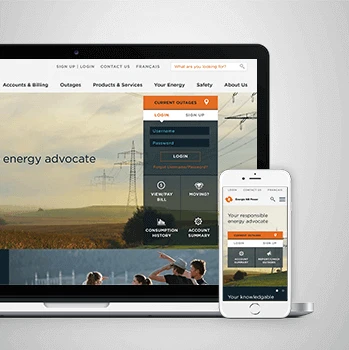What exactly is a self-managed UX team and how does it differ from traditional team structures?
A self-managed UX team is a fully autonomous unit that internally decides who does what, when, and how without external management oversight. Unlike traditional hierarchical teams, these teams collectively act as their own managers, making strategic decisions about processes, priorities, and execution while applying our Experience Thinking framework across brand, content, product, and service experiences.
Tip: Ensure your organization is ready for autonomous decision-making by assessing your current comfort level with decentralized authority and self-directed work approaches.
How do self-managed UX teams align with digital transformation initiatives?
Self-managed teams are essential for digital transformation because they provide the agility and responsiveness needed to navigate rapidly changing user expectations and technology landscapes. These teams can adapt quickly to new requirements, pivot based on user research insights, and make strategic decisions that keep transformation initiatives user-centered rather than technology-driven.
Tip: Position self-managed UX teams as transformation enablers early in your digital initiatives rather than waiting until implementation challenges arise.
What organizational maturity level is required for successful self-managed UX teams?
Organizations need sufficient trust, clear goal-setting capabilities, and comfort with distributed decision-making to succeed with self-managed teams. Using Experience Thinking organizational models, companies should have moved beyond command-and-control structures and developed collaborative cultures that value autonomy, experimentation, and outcome-based performance measurement.
Tip: Assess your organization's readiness by evaluating current team autonomy levels, decision-making speed, and leadership comfort with distributed authority before implementing self-managed structures.
How do self-managed UX teams maintain quality and consistency without traditional oversight?
Self-managed teams maintain quality through peer accountability, systematic processes, and shared professional standards rather than management oversight. Our Experience Thinking methodology provides frameworks for consistent decision-making, while team members collectively establish quality criteria, review processes, and continuous improvement mechanisms that ensure high-standard deliverables.
Tip: Establish clear quality standards and peer review processes before launching self-managed teams to ensure consistency without creating bureaucratic overhead.
What role does cross-functional collaboration play in self-managed UX teams?
Cross-functional collaboration is fundamental to self-managed UX teams, as these teams include diverse skills needed for complete project delivery. Teams typically combine UX researchers, designers, strategists, and often technical specialists who collaborate seamlessly without external coordination. This structure eliminates handoff delays and enables holistic solution development.
Tip: Define clear role boundaries and collaboration protocols within self-managed teams to prevent overlap confusion while maintaining collaborative flexibility.
How do self-managed teams handle conflict resolution and difficult decisions?
Self-managed teams develop internal conflict resolution mechanisms including structured discussion protocols, consensus-building techniques, and escalation procedures for difficult decisions. Teams establish shared decision-making frameworks, rotate leadership responsibilities for different project aspects, and create psychological safety that enables productive disagreement and creative problem-solving.
Tip: Invest in team formation activities and conflict resolution training early to establish healthy dynamics before challenging situations arise.
What foresight design capabilities do self-managed UX teams develop?
Foresight design involves anticipating future user needs and market changes to create adaptive solutions. Self-managed teams develop this capability through regular trend analysis, scenario planning exercises, and proactive research into emerging user behaviors. This forward-looking approach helps teams make strategic decisions that remain relevant as conditions evolve.
Tip: Allocate dedicated time for horizon scanning and trend analysis within self-managed teams to build organizational capacity for anticipating future challenges and opportunities.
What roles and skills are typically included in a self-managed UX team?
Self-managed UX teams typically include UX researchers, interaction designers, visual designers, content strategists, and UX strategists who can collectively handle complete project lifecycles. Team composition adapts based on project needs but maintains core capabilities across research, design, testing, and strategic planning to ensure autonomous operation without external dependencies.
Tip: Map your project requirements against team capabilities to identify any skill gaps that might require additional specialists or training before team launch.
How do you determine the optimal size for a self-managed UX team?
Optimal team size typically ranges from 4-8 members, balancing diverse skill coverage with effective communication and decision-making efficiency. Smaller teams enable faster decisions and stronger collaboration, while larger teams provide more specialized expertise. Size depends on project complexity, organizational context, and the scope of Experience Thinking implementation across brand, content, product, and service areas.
Tip: Start with smaller team sizes and scale up gradually based on workload and collaboration effectiveness rather than trying to create large autonomous teams immediately.
What leadership structure exists within self-managed UX teams?
Self-managed teams often use rotating leadership models where different team members lead various project aspects based on expertise and project phases. Leadership responsibilities might rotate between research, design, and strategy phases, or team members might specialize in client relationships, technical coordination, or process improvement while maintaining collective decision-making authority.
Tip: Establish clear leadership rotation protocols and decision-making authorities to prevent confusion while maintaining the flexibility that makes self-managed teams effective.
How do self-managed teams handle specialization versus generalization?
Successful self-managed UX teams balance specialized expertise with collaborative generalization, where team members develop primary specializations while maintaining broad UX knowledge. This T-shaped skill approach enables deep expertise in specific areas while fostering collaboration and knowledge sharing across all Experience Thinking quadrants.
Tip: Encourage team members to develop secondary skills outside their primary expertise to increase team flexibility and reduce dependencies on individual specialists.
What client-facing responsibilities do self-managed UX teams handle?
Self-managed teams typically handle all client interactions including stakeholder meetings, presentation delivery, requirement gathering, feedback sessions, and ongoing communication. Team members rotate client-facing responsibilities based on project phases and individual strengths, ensuring consistent relationship management while distributing communication workload across the team.
Tip: Identify team members with strong communication skills early and provide presentation training to others to ensure all team members can effectively interact with clients when needed.
How do teams manage individual professional development within self-managed structures?
Self-managed teams create internal mentorship relationships, peer learning opportunities, and individual development planning that doesn't rely on traditional management structures. Team members take responsibility for identifying growth opportunities, sharing knowledge, and supporting each other's professional advancement through collaborative learning and skill development initiatives.
Tip: Establish regular professional development discussions and peer feedback sessions to ensure individual growth continues without traditional management oversight.
What technical and process management capabilities do self-managed teams need?
Teams need project management, process optimization, quality assurance, and tool management capabilities alongside UX expertise. Members typically develop skills in agile methodologies, workflow optimization, client management, and business development to maintain complete operational autonomy while delivering professional services that meet business objectives.
Tip: Invest in business skills training for UX team members to ensure they can handle operational responsibilities alongside creative and strategic work.
How do self-managed UX teams establish and maintain effective processes?
Self-managed teams develop systematic approaches to project initiation, stakeholder engagement, research planning, design iteration, and quality assurance through collaborative process design. Teams regularly evaluate and refine their methodologies using Experience Thinking principles to ensure processes serve both user outcomes and business objectives effectively.
Tip: Document and regularly review team processes to identify improvement opportunities and ensure new team members can quickly understand established workflows and standards.
What project management approaches work best for self-managed UX teams?
Agile and lean methodologies work particularly well for self-managed UX teams because they emphasize collaboration, iterative improvement, and adaptive planning. Teams often customize agile practices to fit UX work patterns, incorporating design thinking phases, user research cycles, and continuous testing into sprint structures that maintain momentum while ensuring quality outcomes.
Tip: Adapt agile methodologies to UX work patterns rather than forcing UX activities into software development frameworks that may not align with design and research timelines.
How do teams handle resource allocation and workload management autonomously?
Self-managed teams develop internal resource planning capabilities including capacity analysis, workload distribution, priority setting, and timeline management. Teams use collaborative planning sessions, workload visibility tools, and regular capacity reviews to ensure balanced work distribution while maintaining project momentum and quality standards.
Tip: Implement transparent workload tracking systems that help team members understand capacity constraints and make informed decisions about task allocation and timeline commitments.
What quality assurance mechanisms do self-managed teams implement?
Teams establish peer review processes, design critique sessions, user testing protocols, and deliverable standards that ensure consistent quality without external oversight. Quality assurance includes both creative review for design excellence and strategic review for business alignment, creating comprehensive evaluation that maintains professional standards.
Tip: Create quality checklists and review templates that team members can use consistently to evaluate work quality across different project types and client requirements.
How do self-managed teams handle client communication and relationship management?
Teams develop shared communication protocols, client relationship strategies, and stakeholder management approaches that ensure consistent professional representation. Communication responsibilities are distributed based on expertise and project phases, with teams maintaining unified messaging while leveraging individual strengths in client interactions.
Tip: Establish clear communication guidelines and shared client contact protocols to ensure consistent messaging while allowing team members to leverage their individual client relationship strengths.
What measurement and reporting systems do self-managed teams use?
Teams implement performance tracking systems that measure both project outcomes and team effectiveness including client satisfaction, project delivery metrics, business impact indicators, and team health measures. Measurement focuses on results and continuous improvement rather than activity monitoring, supporting autonomous operation while demonstrating value.
Tip: Focus measurement systems on outcomes and impact rather than activity tracking to maintain team autonomy while providing stakeholders with meaningful progress indicators.
How does foresight design influence operational planning in self-managed teams?
Foresight design capabilities help teams anticipate future challenges, plan for changing client needs, and adapt processes proactively rather than reactively. Teams use scenario planning, trend analysis, and strategic forecasting to make operational decisions that prepare for future requirements while maintaining current project excellence.
Tip: Include regular strategic planning sessions in team operations to anticipate future challenges and opportunities rather than only focusing on current project demands.
How do self-managed UX teams integrate with client organizations and existing workflows?
Self-managed teams adapt their autonomous structure to complement client organizational cultures while maintaining their operational independence. Integration involves understanding client decision-making processes, communication preferences, and project management approaches, then aligning team operations to work effectively within these constraints while preserving self-management benefits.
Tip: Conduct organizational culture assessments early in client relationships to understand how your self-managed approach will fit within their existing structures and communication patterns.
What level of client involvement is optimal for self-managed team success?
Optimal client involvement includes strategic input, stakeholder access, feedback provision, and decision-making authority while allowing teams operational autonomy. Clients should participate in goal-setting, milestone reviews, and strategic guidance without micromanaging daily activities or individual task assignments that teams handle internally.
Tip: Establish clear boundaries between client strategic input and team operational autonomy to prevent scope creep while ensuring adequate stakeholder engagement for project success.
How do teams handle conflicting stakeholder priorities within client organizations?
Self-managed teams develop stakeholder alignment strategies including priority negotiation, consensus-building techniques, and conflict resolution approaches that help client organizations resolve internal disagreements. Teams use Experience Thinking frameworks to demonstrate how different priorities affect user outcomes and business objectives, guiding stakeholders toward unified decisions.
Tip: Identify key decision-makers early and establish escalation protocols for resolving stakeholder conflicts rather than letting internal client disagreements derail project progress.
What communication structures work best between self-managed teams and client stakeholders?
Effective communication structures include regular strategic check-ins, milestone presentations, continuous feedback channels, and emergency escalation protocols. Teams maintain transparency about progress and challenges while preserving autonomy in methodology and tactical execution, ensuring stakeholders stay informed without creating operational dependencies.
Tip: Create communication schedules that provide adequate stakeholder visibility without creating excessive meeting overhead that reduces team productivity and autonomous operation effectiveness.
How do self-managed teams adapt to different client organizational cultures?
Teams develop cultural intelligence and adaptation capabilities that allow them to work effectively within diverse organizational contexts while maintaining their core self-management principles. Adaptation includes communication style adjustments, meeting format modifications, and deliverable presentations that resonate with different corporate cultures and decision-making approaches.
Tip: Invest time in understanding client organizational culture and communication preferences early in relationships to avoid misalignment and ensure effective collaboration throughout project lifecycles.
What role do self-managed teams play in client capability building and knowledge transfer?
Teams contribute to client capability development through methodology demonstration, collaborative work sessions, training delivery, and knowledge documentation. This capability building occurs naturally through project work rather than separate training initiatives, ensuring clients develop internal UX capabilities while benefiting from immediate project value.
Tip: Structure projects to include collaborative activities that naturally transfer knowledge and capabilities to client teams rather than treating knowledge transfer as separate deliverable.
How do teams manage transitions and handoffs with client internal teams?
Self-managed teams develop systematic transition approaches including documentation creation, training delivery, process establishment, and ongoing support planning. Transitions are managed collaboratively to ensure client teams can continue work effectively while maintaining the quality standards and methodological approaches established during project delivery.
Tip: Plan transition activities throughout project execution rather than leaving handoff planning until project completion to ensure smooth knowledge transfer and continued success.
How do you measure the success and effectiveness of self-managed UX teams?
Success measurement includes project delivery metrics, client satisfaction scores, business impact indicators, team health assessments, and innovation outcomes. Using Experience Thinking principles, measurement addresses outcomes across brand, content, product, and service experiences rather than just activity completion, demonstrating comprehensive value creation and autonomous operation effectiveness.
Tip: Establish both quantitative metrics and qualitative assessments that capture team autonomy benefits alongside traditional project success indicators to demonstrate the full value of self-managed approaches.
What business outcomes can organizations expect from self-managed UX teams?
Organizations typically see faster decision-making, increased innovation, improved client satisfaction, reduced coordination overhead, and higher team engagement from self-managed structures. Research indicates that autonomous teams can deliver projects 40% faster while maintaining quality standards, with 80% of Fortune 1000 companies now using some form of self-managed team structure.
Tip: Track both efficiency improvements and quality outcomes to demonstrate that self-managed teams deliver better results faster rather than just working more quickly.
How do self-managed teams demonstrate ROI and value to client organizations?
Teams demonstrate value through comprehensive impact measurement including user experience improvements, business metric changes, process efficiency gains, and strategic capability development. ROI demonstration connects UX improvements to revenue increases, cost reductions, and competitive advantages while showcasing the effectiveness of autonomous operation.
Tip: Connect team autonomy benefits to specific business outcomes by showing how faster decision-making and reduced coordination overhead translate into measurable value for client organizations.
What metrics indicate healthy self-managed team dynamics and performance?
Healthy team indicators include balanced workload distribution, active participation in decision-making, peer support behaviors, continuous learning activities, and proactive problem-solving approaches. Teams monitor collaboration quality, conflict resolution effectiveness, and individual satisfaction alongside project delivery metrics to ensure sustainable autonomous operation.
Tip: Regularly assess team dynamics and individual satisfaction to identify potential issues early before they impact project delivery or team effectiveness.
How do teams track innovation and creative output in self-managed environments?
Innovation tracking includes solution creativity assessment, approach originality evaluation, client feedback on innovative elements, and impact measurement of creative problem-solving. Teams document breakthrough insights, novel methodologies, and creative solutions that emerge from autonomous operation, demonstrating the innovation benefits of self-managed structures.
Tip: Create innovation portfolios that capture creative solutions and breakthrough insights to demonstrate how self-managed autonomy enables innovation that traditional structures might constrain.
What long-term impact assessments help validate self-managed team effectiveness?
Long-term assessments include client retention rates, project scalability indicators, team member professional development, organizational capability building, and competitive advantage creation. These evaluations demonstrate whether self-managed approaches create sustainable value and lasting improvements rather than just short-term efficiency gains.
Tip: Establish longitudinal tracking systems that measure team impact over extended periods to validate that self-managed approaches create lasting organizational value.
How does foresight design capability contribute to measurable team performance?
Foresight design capabilities enhance team performance by enabling proactive solution development, trend-responsive project planning, and future-ready deliverable creation. Teams with strong foresight capabilities typically achieve higher client satisfaction through anticipatory problem-solving and create solutions that remain relevant longer, demonstrating superior strategic value.
Tip: Track how often team foresight activities prevent problems or identify opportunities before they become critical to demonstrate the strategic value of forward-looking capabilities.
How do organizations scale self-managed UX team approaches across multiple projects?
Scaling involves creating systematic onboarding processes, shared methodology frameworks, cross-team knowledge sharing protocols, and consistent quality standards that enable multiple autonomous teams to operate effectively. Organizations develop supporting infrastructure including training programs, resource sharing systems, and collaborative tools that maintain autonomy while ensuring consistency.
Tip: Develop standardized frameworks and processes that teams can adapt to their specific contexts rather than trying to replicate identical team structures across different projects and client needs.
What organizational changes are needed to support multiple self-managed UX teams?
Supporting multiple self-managed teams requires flatter organizational structures, distributed decision-making authority, resource allocation flexibility, and performance management systems adapted for autonomous operation. Organizations need leadership comfort with distributed authority and measurement systems focused on outcomes rather than process control.
Tip: Assess your current organizational structure and decision-making processes to identify changes needed before scaling self-managed approaches across multiple teams or business units.
How do you maintain consistency across multiple self-managed teams?
Consistency is maintained through shared Experience Thinking frameworks, common quality standards, regular cross-team communication, and collaborative best practice development. Teams maintain autonomy in execution while adhering to consistent methodology principles and quality criteria that ensure uniform client experience and deliverable standards.
Tip: Create shared frameworks and standards that provide consistency guidance while preserving team autonomy to adapt approaches based on specific project requirements and client contexts.
What resource sharing and support systems work best for multiple self-managed teams?
Effective support systems include shared knowledge repositories, cross-team mentoring programs, resource pooling arrangements, and collaborative problem-solving networks. Teams maintain operational independence while accessing shared expertise, tools, and specialized capabilities that individual teams might not possess internally.
Tip: Build resource sharing systems that teams can access voluntarily rather than mandatory collaboration requirements that might compromise their autonomous operation and decision-making flexibility.
How do you develop leadership capabilities across multiple self-managed teams?
Leadership development occurs through cross-team rotation programs, mentoring relationships, shared learning initiatives, and collaborative leadership challenges. Teams develop internal leadership capabilities while contributing to broader organizational leadership development through knowledge sharing and experience transfer between autonomous units.
Tip: Create leadership development opportunities that leverage the diverse experiences of multiple self-managed teams rather than relying on traditional hierarchical leadership training programs.
What quality assurance and governance frameworks work for scaled self-managed operations?
Scaled governance focuses on outcome standards rather than process control, with frameworks that enable peer review, cross-team quality assessment, and collaborative improvement initiatives. Governance systems maintain professional standards while preserving team autonomy through principle-based guidance rather than prescriptive process requirements.
Tip: Design governance frameworks that focus on outcome quality and principle adherence rather than process standardization to maintain the benefits of self-managed autonomy at scale.
How does foresight design capability scale across multiple autonomous teams?
Foresight design scaling involves shared trend monitoring, collaborative scenario planning, cross-team knowledge sharing, and coordinated strategic planning activities. Multiple teams contribute to organizational foresight capabilities while maintaining individual autonomy in applying insights to their specific project contexts and client requirements.
Tip: Create shared foresight resources and collaborative planning sessions that enable teams to benefit from collective intelligence while maintaining autonomy in strategic decision-making for their specific projects.
How are self-managed UX teams evolving to meet changing market demands?
Self-managed teams are evolving by incorporating advanced technologies, developing hybrid collaboration capabilities, expanding service offerings, and building stronger business acumen alongside traditional UX expertise. Evolution includes AI tool integration, foresight design capabilities, and strategic consulting skills that enable teams to remain relevant as market conditions change.
Tip: Plan for continuous team evolution and capability development rather than assuming current self-managed structures will remain optimal as market conditions and client needs change over time.
What role does remote and hybrid work play in self-managed UX team effectiveness?
Remote and hybrid capabilities are essential for self-managed team success, enabling access to global talent, flexible collaboration patterns, and client service across different geographic markets. Teams develop sophisticated virtual collaboration skills, asynchronous work capabilities, and digital-first processes that support autonomous operation regardless of physical location.
Tip: Invest in robust digital collaboration tools and virtual team management capabilities to ensure self-managed teams can operate effectively across different locations and time zones.
How do self-managed teams adapt to emerging technologies and methodology changes?
Self-managed teams develop adaptive learning capabilities, experimentation mindsets, and technology evaluation processes that enable rapid adoption of beneficial innovations. Teams balance innovation exploration with proven methodology application, ensuring they remain cutting-edge while maintaining reliable delivery capabilities and quality standards.
Tip: Allocate dedicated time and resources for technology experimentation and methodology development to ensure teams can adapt to industry changes without compromising current project delivery.
What competitive advantages do self-managed UX teams provide in the current market?
Self-managed teams provide advantages including faster decision-making, increased innovation capability, superior client responsiveness, reduced coordination overhead, and higher team engagement levels. These capabilities are particularly valuable in competitive markets where speed, creativity, and adaptability determine success in winning and retaining clients.
Tip: Position self-managed team capabilities as competitive differentiators in client discussions rather than just operational improvements to maximize the strategic value of autonomous approaches.
How do self-managed teams contribute to organizational innovation and thought leadership?
Self-managed teams drive innovation through autonomous experimentation, creative problem-solving, methodology development, and thought leadership contribution. Teams have freedom to explore innovative approaches, share insights with industry communities, and develop proprietary methods that enhance organizational reputation and competitive positioning.
Tip: Encourage teams to contribute to industry knowledge through speaking, writing, and methodology sharing to build thought leadership reputation while advancing the field of autonomous UX practice.
What sustainability considerations affect long-term self-managed team success?
Sustainability requires attention to team member well-being, professional development, work-life balance, and career progression within autonomous structures. Teams develop systems for preventing burnout, maintaining engagement, providing growth opportunities, and ensuring individual satisfaction alongside collective success and project delivery excellence.
Tip: Monitor team member satisfaction and professional development regularly to ensure self-managed structures support individual career goals while maintaining collective team effectiveness and project success.
How can AI enhance self-managed UX team capabilities while preserving human-centered approaches?
AI enhances self-managed teams by accelerating research analysis, design exploration, and testing processes while preserving human expertise in strategic thinking, empathy development, and creative problem-solving. Teams learn to leverage AI tools for efficiency gains while maintaining the human-centered focus that defines excellent user experience work and autonomous decision-making.
Tip: Integrate AI tools gradually into team workflows, focusing on administrative and analytical tasks while preserving human expertise for strategic thinking, stakeholder relationships, and creative problem-solving activities.












